The Boy in the Ice: A Real Horror Story
A real horror story of The Boy in the Ice—true crime inspired horror turned ghost story based on real events, haunting the cruel and protecting the innocent
TERRIFYING STORIES
Marcel Helmar
11/4/202528 min read
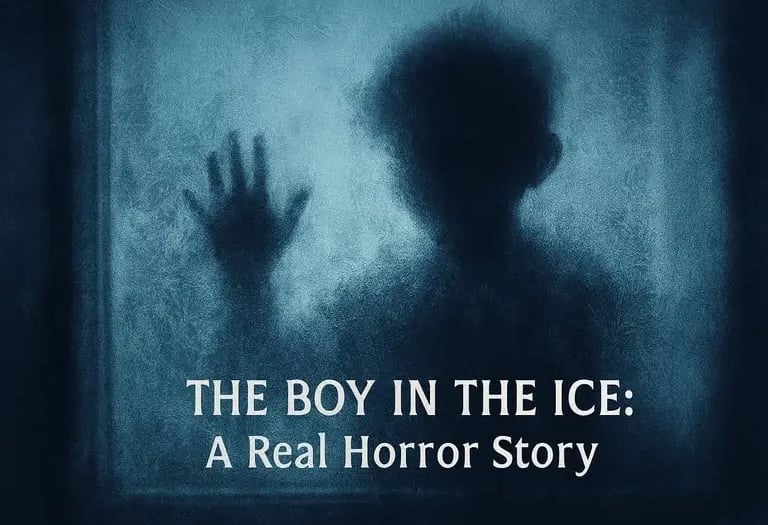

Caption: The Boy in the Ice: A real horror story born of cruelty and silence, now haunting the guilty and protecting the innocent.
Share:
Part I: The House of Silence & The Freezer
The House of Silence
This is not just another tale of shadows and whispers — it is a real horror story, born from cruelty behind closed doors, where silence was enforced and warmth was denied.
The boy lived in a house where the curtains never opened. Heavy cloth sagged across the windows, not to block the sun but to block the world. The air inside was stale, thick with mildew, grease, and the faint metallic tang of neglect. The carpet was worn to threads, the wallpaper bubbled with damp, and the kitchen smelled of rot that no one cleaned.
Neighbors passed by the door and heard nothing. No laughter, no music, no television. Silence was the rule of that house, and silence was enforced.
The boy learned early that silence was safer than speech. When he spoke, voices rose against him. When he laughed, hands struck him. When he cried, the sound was smothered. He became a child of whispers, of lowered eyes, of breath held in his chest until it hurt.
His mother, his father, and his grandmother were the architects of this silence. They did not raise him; they broke him. To them, he was not a son, not a grandson, not even a child. He was a burden, a scapegoat, a vessel for their rage.
Meals were withheld. Bruises bloomed like flowers no one would ever admire. Nights were long vigils of fear, waiting for the next outburst, the next punishment. The boy’s world was four walls, a locked door, and the knowledge that no one was coming to save him.
The other children in the house — older, younger — learned to look away. They carried their own scars, but his suffering was the deepest. They heard his muffled cries through the walls and pressed their hands over their ears. They learned that survival meant silence, too.
The boy’s only companions were shadows and the cold. He would sit by the window at night, watching frost creep along the glass, even when the air outside was warm. He thought perhaps the frost was his friend, the only thing that touched him gently.
He began to imagine the frost as a spirit, a presence that understood him. He traced its patterns with his finger, whispering secrets into the glass. The frost never answered, but it never struck him either. In that house, that was enough.
Sometimes, when the others slept, he would press his face to the window and breathe, fogging the glass. He would draw shapes in the mist — circles, spirals, crude figures of children holding hands. They vanished quickly, erased by the cold. But for a moment, he could pretend he was not alone.
The neighbors noticed things, though they pretended not to. They saw the boy’s thin frame when he was dragged to the car. They saw the bruises that bloomed and faded like storm clouds. They heard the muffled cries through the walls, the sudden silences that followed. But they told themselves it was not their business. They told themselves children cry, children bruise, children are resilient. They told themselves lies, because the truth was too heavy to carry.
And so the boy remained unseen, unheard, unrescued.

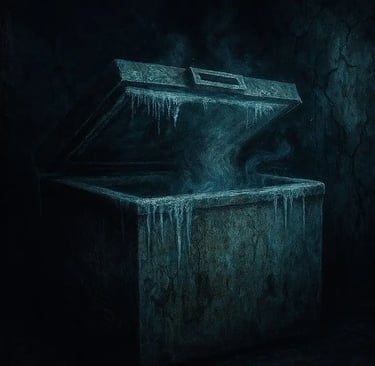
The Freezer
The night it happened was not marked by thunder or storm. It was ordinary, which made it worse. The boy had displeased them again — though what crime he had committed, no one could say. Perhaps he had spoken too loudly. Perhaps he had eaten too slowly. Perhaps he had simply existed in a way that reminded them of their own failures. In that house, existence itself was often enough to provoke punishment.
They dragged him into the kitchen. The linoleum was cracked, the overhead light buzzing faintly, casting a sickly yellow glow. Against the far wall sat the old chest freezer, its enamel chipped, its lid streaked with grime. Once, long ago, it had been meant to preserve food. Now it preserved only fear. It had become a threat, a whispered punishment, a place invoked to silence him when words or blows were not enough.
The boy had seen it before. He had been warned of it, threatened with it. But this time, the threat became reality. His small body was lifted, shoved, folded into the hollow belly of the machine. The smell of cold plastic and stale air filled his nostrils. The lid came down with a heavy thud, sealing him in darkness.
At first, he pounded. His fists struck the plastic walls, dull thuds that echoed back at him. He kicked, his heels scraping against the slick interior. His muffled cries rose, desperate, but the kitchen outside remained silent. No one came. No one ever came.
Minutes stretched. His fists slowed. His voice cracked into whispers, calling out for someone — anyone — to hear him. He pressed his palms against the lid, feeling the chill seep into his skin. His breath fogged the inside, leaving pale clouds that bloomed and vanished, the only proof he was still alive.
The air thinned. The cold crept into his lungs, into his bones, into the very marrow of his small frame. He thought of the frost on the window, the only friend he had ever known. He wondered if it would meet him here, in this box of ice.
And when his breath stopped, the silence was absolute.
But silence is never empty.


From Freezer to Flesh: The Haunting Made Artifact
Born from the legend of the frozen boy, this shirt carries the silence and the frost with you. A relic of horror and protection, forged in cotton and shadow.
$22.50
Share This Shirt:
The Becoming
The freezer was not only a coffin. It was a crucible.
In that frozen dark, the boy’s body surrendered, but his spirit did not. What had been fragile and trembling began to harden. Grief, once a flood, crystallized into ice. Rage, once a spark, froze into something sharper, more enduring. The silence that had smothered him all his life did not extinguish him — it refined him.
He felt the cold seep into him, not as an enemy but as an ally. The frost he had once traced on the window now traced itself across his skin, etching invisible sigils into his soul. Each breath he could not take became a vow. Each heartbeat that slowed became a drumbeat of transformation.
The freezer became his cocoon. Within its plastic walls, he shed the last remnants of childhood. The bruises, the hunger, the fear — all of it sloughed away, leaving only essence. He was no longer a boy waiting for rescue. He was no longer a victim waiting for mercy. He was something else, something born of silence and sharpened by cold.
The freezer became his altar. The lid was the stone, the frost the incense, the darkness the hymn. In that place, he was consecrated. The cruelty of his captors had written a ritual they did not understand, and in their ignorance they had made him sacred.
The freezer became his portal. When the lid was finally opened, there was no child left to lift out. What emerged was not flesh but presence. The air itself seemed to recoil, as though it knew something had changed. The frost clung to the walls, refusing to melt, as if honoring the spirit that had claimed it.
He was no longer a child. He was no longer a victim. He was silence made flesh, frost given voice. He was the Boy in the Ice.
And though his body was gone, his story was not. The silence that had once hidden him now carried him. The frost that had once comforted him now bore his mark. He had become more than memory, more than ghost. He had become a haunting.
Part II: The Haunting of the Guilty
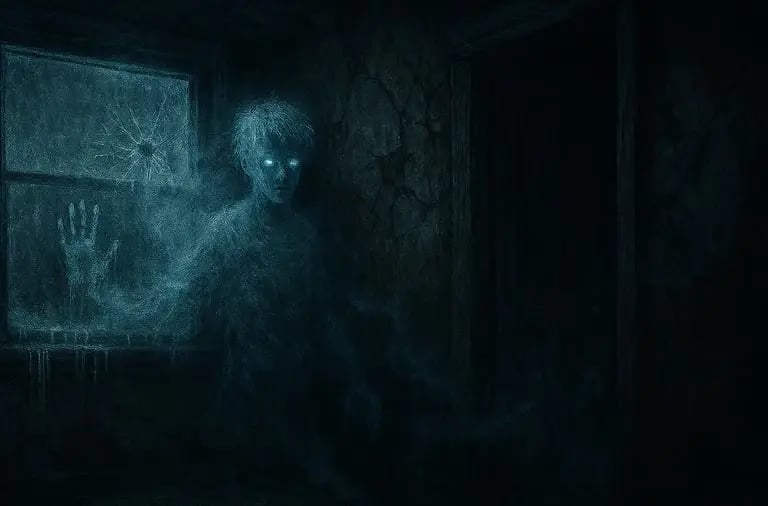

The Father’s Frost
The father was the first to feel it.
In prison, the air was heavy and stale, thick with sweat, disinfectant, and the faint tang of rust. The cells were never cold; if anything, they were suffocatingly warm, the kind of heat that clung to concrete and made sleep restless. Yet within days of his arrival, the father woke in the night to see his breath fogging in the dark.
At first, he thought it was a trick of exhaustion. He rubbed his eyes, sat up on the thin mattress, and exhaled again. The mist of his breath hung in the air, pale and undeniable. He pressed his hand to the wall beside his bunk. It was cold — not cool, not drafty, but biting, as though the concrete had been carved from ice.
By morning, the frost was gone. The guards laughed when he mentioned it. “This place is a furnace,” one said. “You’re lucky if you ever feel a chill.” His cellmate shrugged, uninterested. But the father knew what he had felt.
The next night, it returned. Frost bloomed across the wall in delicate lacework, spreading outward from the corner where no vent existed. The patterns were intricate, almost beautiful — spirals and branches, like the veins of leaves or the cracks in shattered glass. He stared at them until his eyes blurred, and in the shifting lines he thought he saw shapes: a small handprint, the curve of a child’s face, the outline of eyes watching him.
He pressed his palm to the frost. The cold bit into his skin, sharp enough to sting. He yanked his hand back, but the mark remained — a pale imprint, as though the frost had claimed him.
Each night, the frost crept closer. It began in the far corner, then spread along the wall, then reached the edge of his bunk. He woke shivering, his blanket stiff with ice. His cellmate cursed him, accusing him of bringing the cold, but when the guards checked, they saw nothing unusual. The frost melted before their eyes, leaving only damp patches on the concrete.
The father stopped sleeping. He sat awake in the dark, watching the frost crawl toward him. He whispered apologies into the air, apologies he had never spoken in life. He begged for warmth, for forgiveness, for silence. But the silence that answered him was not empty. It was heavy, watchful, filled with presence.
One night, he dreamed — or thought he dreamed — that the frost had covered the entire cell. The walls, the floor, the ceiling, all encased in ice. In the center stood the boy, his silhouette dark against the pale glow. The boy raised his hand, pressed it to the wall, and frost radiated outward in a burst of crystalline light. The father tried to speak, but his voice froze in his throat. The boy’s eyes — or the suggestion of them — fixed on him, and in that gaze the father felt every bruise, every withheld meal, every night of silence he had forced upon his son.
He woke screaming, his body drenched in sweat, his breath fogging the air. His cellmate had moved to the farthest corner, muttering prayers. The guards shook their heads. “Losing it already,” they said.
But the father knew it was not madness. It was justice.
The frost did not relent. It seeped into his bones, into his marrow. His hands trembled, his teeth chattered even in the sweltering heat of the prison. He grew gaunt, his skin pale, his eyes hollow. He stopped speaking altogether, curling into himself on the bunk, shivering like a man abandoned in a blizzard.
The other inmates mocked him at first, calling him weak, calling him cursed. But when they touched his blanket and felt the ice stiff in the fibers, they recoiled. They stopped mocking. They stopped coming near him at all.
The father became a figure of dread, a man haunted by a cold no one else could feel. And in the silence of his cell, the frost continued to bloom, delicate and merciless, a nightly visitation from the Boy in the Ice.

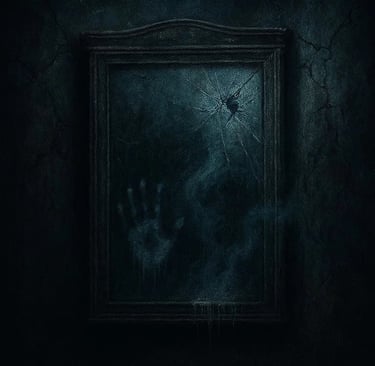
The Mother’s Mirror
The mother’s torment came differently.
In the women’s block, each cell was fitted with a small square of glass above the sink — a mirror bolted to the wall, meant for grooming, for the daily rituals of the confined. To most, it was a trivial thing. To her, it became unbearable.
On her first morning, she woke to find the mirror clouded with condensation. The air was dry, the vents humming with recycled heat, yet the glass was misted as though someone had breathed upon it. She leaned closer, wiping the surface with her sleeve. Beneath the smear, a child’s handprint lingered in the fog — small fingers splayed wide, pressed flat against the glass.
She recoiled. The print faded, but the impression remained in her mind.
The next morning, it returned. The same handprint, the same size, the same impossible fog. She scrubbed at it with soap, with water, with her bare nails until the glass squealed. By evening, the mirror was clean. By dawn, the fog had returned.
She smashed the mirror once, in desperation. She struck it with her fist, splitting the glass into jagged shards. The guards replaced it the next day. The fog returned the morning after.
At night, she began to hear breathing. Not her own — slower, shallower, the breath of a child. It echoed faintly from the mirror, as though the glass itself were lungs. Sometimes, when she dared to look, she saw a shape behind her shoulder: a boy’s silhouette, blurred by frost, standing just beyond the reflection.
She begged the guards to remove the mirror. They laughed. “What’s a woman afraid of her own reflection for?” they jeered. But she knew it wasn’t her reflection. It was him.
The handprints multiplied. Some mornings there were two, then three, overlapping, crowding the glass. She pressed her own hand against them once, trembling, and felt the chill seep into her bones. She yanked her hand back, but the frost clung to her skin, leaving her fingers numb.
Sleep abandoned her. She sat awake in the dark, staring at the mirror, waiting for the fog to bloom. She whispered apologies, bargains, prayers. The mirror gave her nothing in return but silence and the steady rhythm of a child’s breath.
And in that silence, she understood: the Boy in the Ice had found her.
The Grandmother’s Whispers
The grandmother’s torment came not in frost or mirrors, but in sound.
Her cell was small, the walls painted a dull gray, the air heavy with disinfectant. At first, she thought the noises were ordinary — the shuffle of guards, the mutter of other prisoners through the vents. But the voice that came to her was not ordinary. It was always the same: a boy’s voice, soft, insistent, repeating a single word.
Cold.
The first time she heard it, she froze. She pressed her ear to the vent, straining to catch more. The word came again, whispered, stretched thin as though carried from a great distance. Cold.
She stuffed her ears with cloth torn from her blanket. The word seeped through. She pressed her hands to the vent, desperate to block it. Frost formed beneath her palms, delicate crystals spreading outward, biting into her skin. She yanked her hands back, staring at the white traces that melted into dampness.
The guards heard nothing. When she shouted at them, they shook their heads. “You’re imagining things,” they said. “No one’s talking to you.” But she knew better. The voice was not imagination. It was memory given form.
The whispers grew louder. Sometimes the boy said nothing but that single word, over and over, until it filled her skull. Other times, the word stretched into phrases, fragments of sentences she had once ignored. I’m hungry. It hurts. Don’t leave me. Each phrase was a blade, cutting through the armor of denial she had worn for years.
She began to mutter back, bargaining, pleading, promising warmth she had never given. She swore she would feed him, clothe him, protect him. She swore she would open the door, let him out, let him breathe. But the boy did not bargain. He only whispered.
Cold.
Her nights became vigils. She sat on her bunk, rocking, whispering back to the voice in the vents. Her cellmates avoided her, unnerved by her muttering. The guards dismissed her as mad. But she knew the truth: the Boy in the Ice had found her, and he would not leave.
The whispers were not just sound. They were judgment. They were the echo of every silence she had enforced, every cry she had ignored. They were the weight of complicity, pressed into her ears until she could not think of anything else.
And as the days passed, the word changed. It was no longer just cold. It became her name, spoken in that same soft, insistent voice. A child’s voice, calling her into the silence she had once demanded.
The Spiral
The three of them unraveled in different ways, but the pattern was the same: silence, denial, collapse.
The father shivered himself into muteness, his body wasting as though the frost had seeped into his marrow. He no longer spoke to guards or inmates; he only stared at the walls, waiting for the next bloom of ice. His silence was not penitence but terror, a man frozen from the inside out.
The mother clawed at her mirror until her fingers bled, desperate to erase the handprints that always returned. Her eyes grew wild, ringed with sleepless shadows. She whispered bargains to the glass, pressing her forehead against it until her skin turned raw. The mirror gave her nothing but fog and the faint echo of a child’s breath.
The grandmother rocked in her bunk, muttering back to the voice in the vents. Her words became a broken litany, half‑plea, half‑confession. She no longer ate, no longer slept, only whispered into the dark, answering the boy who never stopped calling her name.
The guards called it madness. The inmates called it justice. But those who knew the story — those who had heard of the boy in the freezer — called it haunting.
And in the silence of their unraveling, the Boy in the Ice grew stronger. His presence was no longer confined to frost, mirror, or whisper. He was everywhere, a chill in the air, a shadow in the corner, a silence that pressed down like snow.
The guilty had begun to spiral, and the spiral had no end.
Part III: The Other Children


The Boy in the Ice was never meant to be remembered. His family tried to erase him with silence, with cruelty, with a freezer lid pressed shut. The neighbors tried to erase him with indifference, with the lie that it was “not their business.” The world tried to erase him by filing his story away as another tragedy, another statistic.
But silence does not erase. Silence preserves.
From the house of silence, his presence seeped outward. First into the prison cells, where frost bloomed on concrete and mirrors fogged with handprints. Then into the children’s homes, where siblings dreamed of him, where toys rearranged themselves, where lullabies hummed in the dark. Then into the town, where frost clung to abandoned windows, where neighbors whispered of a boy who would not leave.
And then into the world. Into forums and podcasts, into rituals and memes, into art and protest. The Boy in the Ice became more than a ghost. He became a mirror, reflecting guilt, fear, justice, and hope. He became an archetype, a figure who demanded remembrance, who punished cruelty, who protected the vulnerable.
His silence was never empty. It was full — of breath, of frost, of presence. It was the silence of a child who had been denied a voice, now speaking louder than screams.
The legend endures because it must. Every retelling is an act of witness. Every whisper of his name is a refusal to forget. Every frost‑bloomed window is a reminder that cruelty leaves echoes, that silence has weight, that the vulnerable are never truly voiceless.
The Boy in the Ice is not bound to one house, one freezer, one family. He belongs to all who have ever been silenced, all who have ever been ignored, all who have ever been left in the cold. He is their haunting, their guardian, their myth.
And so the story ends as it began: with silence. But now it is not the silence of neglect. It is the silence of presence, of frost spreading across glass, of breath fogging the air. It is the silence that speaks, the silence that remembers, the silence that will never let the world forget.
The Boy in the Ice remains. And he always will.
The Younger Brother
The younger brother had been too small to understand everything that happened in the house of silence. He remembered fragments: the sound of doors slamming, the sharpness of voices, the way his older brother’s cries would rise and then vanish into nothing. He remembered pressing his hands over his ears, hiding beneath blankets, telling himself it was only a dream.
After the trial, he was placed in a foster home. The family was kind enough, but kindness could not erase memory. He carried the silence with him, like a shadow stitched to his skin. At night, when the house was quiet, he would lie awake and wait for the sound of fists on plastic, the muffled thuds of someone begging to be let out.
It began with toys. His foster parents gave him a box of secondhand cars and action figures. He lined them up neatly on the floor, but in the morning, they were always rearranged. Sometimes they were clustered in the corner, as though huddled for warmth. Sometimes they were tipped onto their sides, frozen mid‑motion. Once, he found them pressed against the window, their tiny plastic hands raised as if trying to escape.
He told himself he had done it in his sleep. But deep down, he knew better.
Then came the cold. His room was always the coldest in the house, no matter how high the thermostat was turned. Frost formed on the inside of the window, delicate patterns that spread outward like veins. He traced them with his finger, just as his brother once had, though he did not know why. The frost seemed to pulse beneath his touch, alive, listening.
One night, he woke to find his breath fogging the air. At the foot of his bed stood a figure — small, thin, blurred by frost. The boy did not move, did not speak. He only stood there, watching. The younger brother pulled the blanket over his head, trembling. When he dared to look again, the figure was gone. But the frost remained, etched across the floorboards in the shape of footprints.
He began to dream of the freezer. He had never been inside it, but in his dreams he knew it intimately: the smell of plastic, the press of the lid, the suffocating dark. He dreamed of his brother’s breath fogging the air, of small fists pounding against the walls. He woke gasping, his chest tight, his skin clammy with cold sweat.
The foster parents grew concerned. They told him it was trauma, that nightmares were normal. They gave him warm milk, night‑lights, soothing words. But none of it mattered. The boy in the ice had found him, and no light could keep him away.
The younger brother began to whisper apologies into the dark, apologies he did not fully understand. He begged forgiveness for looking away, for covering his ears, for surviving when his brother had not. The silence that answered him was heavy, filled with presence.
And in that silence, he realized the truth: the haunting was not punishment. It was inheritance.
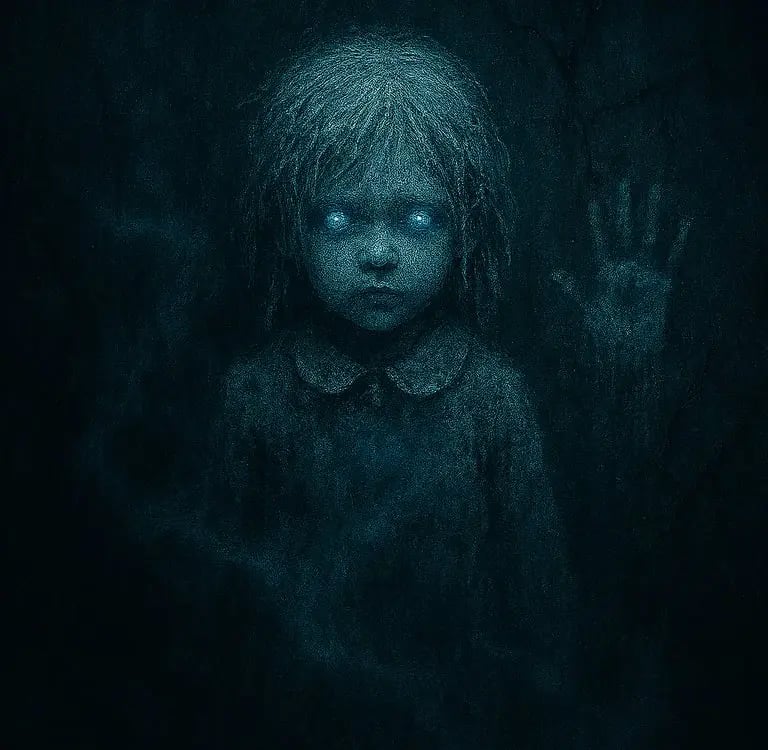

The Youngest Sister
The youngest sister had been too small to remember the details of the house of silence. She remembered shadows more than faces, tones more than words. She remembered the way the air felt heavy, the way the rooms seemed to hold their breath. She remembered the freezer, though she had never been inside it — the way it loomed in the kitchen like a sleeping beast, the way the adults spoke of it in hushed threats.
After the trial, she was placed in a children’s home. The staff called her quiet, withdrawn. She rarely spoke, rarely played. She sat in corners with her knees pulled to her chest, watching the other children with wide, unblinking eyes. They thought she was shy. They did not know she was listening.
It began with lullabies. At night, when the other children slept, she heard a voice humming softly in the dark. It was not the staff, not the other children. It was a boy’s voice, thin and fragile, humming a tune she half‑remembered from the house. She pressed her hands over her ears, but the melody seeped through, winding into her dreams.
In her dreams, she saw him. Not clearly — never clearly — but as a shape in frost, a figure blurred by cold. He stood at the foot of her bed, humming, his breath fogging the air. She woke with the tune still in her head, her pillow damp with condensation.
The staff told her it was memory, nothing more. But memory does not leave frost on the window.
One morning, she found words traced in the condensation: Sing with me. The letters were small, uneven, as though written by a child’s hand. She wiped them away, trembling. The next morning, they returned.
She began to hum back, softly, under her breath. It was not defiance but surrender. She did not know the words, only the melody, but the act of humming seemed to calm the air around her. The frost still came, but it no longer frightened her. It felt like a presence, like a brother she had lost but not lost.
The other children noticed. They whispered that she was strange, that she sang to ghosts. Some avoided her. Others dared each other to sleep in her room, but none lasted the night. The cold drove them out, their teeth chattering, their eyes wide with fear.
The youngest sister did not fear him. She feared the silence of the adults, the silence that had killed him. But the boy himself — the Boy in the Ice — she welcomed. He was her brother, her haunting, her inheritance.
And in the quiet of those nights, as she hummed the tune he gave her, she understood: he was not gone. He was with them still, bound to their blood, bound to their silence. And he would never let them forget.
The Convergence
The siblings carried their hauntings separately at first — frost in one cell, whispers in another, lullabies in the dark. But hauntings are not solitary things. They spiral outward, weaving threads until they form a net.
The eldest sister dreamed of handprints on glass. The younger brother woke to toys rearranged by unseen hands. The youngest hummed lullabies that were not hers. Each thought their torment private, but the patterns overlapped. When they spoke — haltingly, in supervised visits, in letters scrawled on lined paper — they realized the same presence lingered with them all.
The Boy in the Ice was not bound to a single place. He was bound to them.
And soon, others began to notice. Staff whispered about sudden chills in the hallways, about frost blooming on windows that should not frost. Other children spoke of a boy they glimpsed in the corner of their rooms, silent, watching. The legend spread, carried in whispers: the boy who froze, the boy who returned, the boy who would not be forgotten.
The siblings understood then that their silence had not ended with the freezer. It had become a story, a haunting that would follow them wherever they went. They were not just survivors. They were witnesses, unwilling keepers of a myth that had grown teeth.
The Boy in the Ice was no longer theirs alone. He belonged to the world now.
Part IV: The Legend

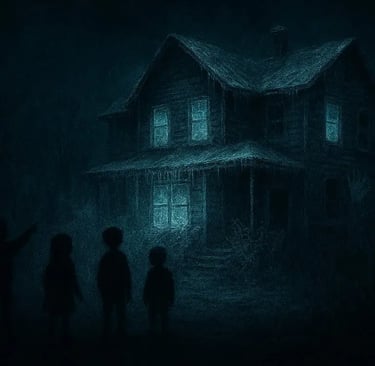
Whispers in the Town
The story did not stay locked in prison walls or children’s homes. Stories never do. They seep outward, carried on breath, on rumor, on the restless need of people to explain the unexplainable.
It began in the town where the house of silence still stood. The neighbors who had once looked away now spoke in hushed tones. They remembered the boy’s thin frame, the bruises, the way the curtains never opened. They remembered the night the police came, the flashing lights, the whispers of “freezer” and “child.” They remembered, and they could not forget.
Soon, they began to notice things. Frost blooming on windows in the middle of summer. A chill in the air when they passed the old house, even though it had been abandoned for years. Children whispered of a boy they saw in the yard, standing still, watching, his breath fogging the air. Adults dismissed it as imagination, but they avoided the house all the same.
The legend grew. They called him the Boy in the Ice, the child who froze but did not die. Some said he haunted the house, waiting for his family to return. Others said he wandered the streets at night, leaving frost on doorsteps, pressing small handprints into glass. A few swore they had heard him breathing in their own homes, a shallow, cold sound that made their skin prickle.
The story spread beyond the town. Newspapers wrote cautious articles, careful not to sensationalize, but the words “freezer” and “child” carried their own weight. Online forums picked it up, weaving fact and rumor into something larger. Some treated it as a ghost story, a local legend. Others treated it as a warning, a reminder of what silence can cost.
And in the telling, the Boy in the Ice grew stronger. He was no longer just a victim, no longer just a haunting confined to family and prison. He was becoming myth.
Children dared each other to walk past the house at night, to press their hands against the frosted windows. Teenagers whispered his name at sleepovers, daring him to appear. Parents used the story as a cautionary tale: Be good, or the Boy in the Ice will come for you.
But beneath the games and the whispers, there was something deeper. The story carried weight because it was true. The boy had lived, had suffered, had died in silence. And now his silence spoke louder than any scream.
The Boy in the Ice was no longer theirs alone. He belonged to the town, to the world, to anyone who had ever looked away from cruelty and felt the chill of guilt settle in their bones.
And the legend was only beginning.
The frost waits for a vessel. These cold‑blue ritual candles burn without flame, casting the same spectral glow that lingers in the story. Keep them lit, and the silence will never reach you.


Summon the Blue Flame
$15.99 - Amazon
The Digital Haunting
Legends no longer stay bound to neighborhoods or whispered stories. In the age of screens, they travel faster than breath, carried by pixels and posts, reshaped with every retelling. The Boy in the Ice was no exception.
It began with a single thread on a local forum. Someone posted about the abandoned house, about the frost that bloomed on its windows even in July. They mentioned the freezer, the trial, the boy who had died in silence. The post spread, shared and reshared, until it reached people who had never set foot in the town.
Soon, photos appeared. Grainy shots of the house at night, with pale shapes in the windows. Close‑ups of frost patterns that looked like handprints. Videos of teenagers daring each other to knock on the door, their laughter breaking into screams when the air grew suddenly cold. Most were hoaxes, but not all. And the uncertainty only fed the legend.
On social media, the Boy in the Ice became a challenge. Hashtags spread: #FrozenBoy, #IceChild, #FreezerGhost. Users claimed that if you whispered his name into a mirror three times, frost would bloom on the glass. Others said if you left a freezer door open at night, you would hear a child’s breathing in the kitchen.
Memes and jokes circulated, but beneath the humor was unease. The story was too raw, too real. Unlike invented monsters, the Boy in the Ice had lived. His suffering was documented, his death undeniable. That truth gave the legend weight.
Podcasts picked it up, true‑crime hosts dissecting the case, paranormal shows speculating on the haunting. Some treated it as tragedy, others as entertainment. But every retelling spread the myth further, weaving it into the fabric of digital folklore.
And strange things began to happen. Listeners reported their headphones frosting over during episodes. Streamers claimed their webcams glitched, showing a child’s silhouette in the background. Posts appeared of freezers frosting shut, of mirrors fogging with handprints, of whispers caught on recordings. Skeptics dismissed it as hysteria, but believers knew: the Boy in the Ice had found a new home.
He was no longer confined to the house, the prison, or the children’s dreams. He lived in the network now, in the endless hum of servers and screens. Every retelling was an invocation. Every share was a summoning.
The Boy in the Ice had become more than a ghost. He had become a digital haunting, a myth that could not be contained.
And with each new story, each new whisper, his silence grew louder.
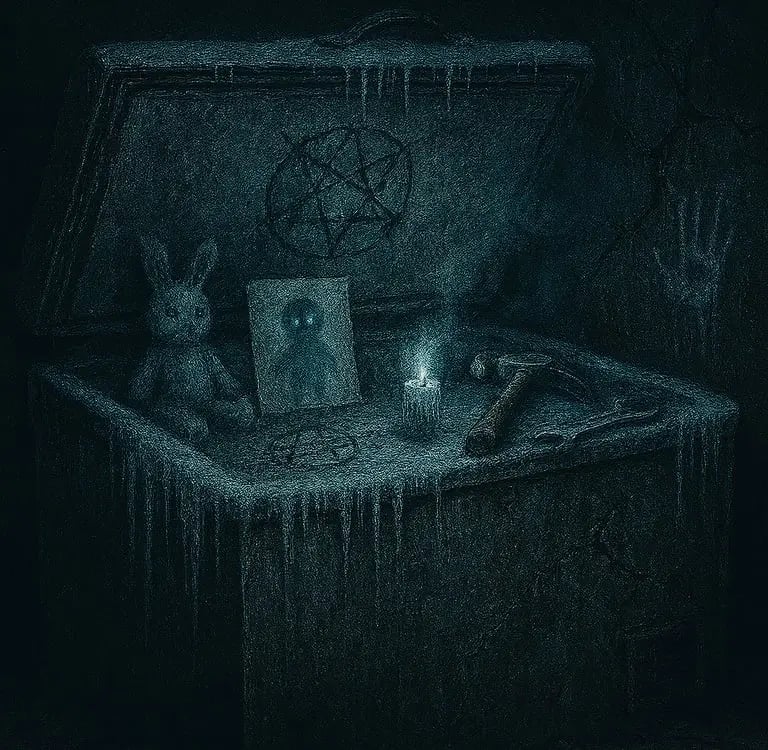

Rituals of Frost
Legends do not remain passive. Once a story takes root, people begin to shape it, to test it, to turn it into ritual. The Boy in the Ice was no different.
It began with children. They whispered his name at sleepovers, daring each other to summon him. They pressed their palms against mirrors, waiting for frost to bloom. Some claimed they felt a chill, others swore they saw handprints appear beside their own. Whether real or imagined, the ritual spread.
Teenagers took it further. They invented games: leave a freezer door open at midnight, whisper “I hear you” three times, and wait for the sound of breathing. Some filmed themselves, posting shaky videos of condensation blooming on glass, of lights flickering, of sudden cold. Most were hoaxes, but not all. And the uncertainty was enough to keep the rituals alive.
Adults, too, found uses for the legend. Parents invoked him as warning: Behave, or the Boy in the Ice will come for you. Activists invoked him as symbol: a child silenced, a child ignored, a child who returned to demand justice. Artists painted him, musicians wrote songs about him, writers folded him into their stories. Each retelling was a ritual in itself, a way of keeping his silence loud.
And then came the protective rites. Some whispered his name not to summon him, but to shield themselves. They traced frost‑like sigils on windows, believing he would guard them from cruelty. They left offerings in freezers — toys, drawings, scraps of food — as though feeding the boy who had once starved.
The Boy in the Ice had become more than a ghost story. He had become a figure of power, invoked in fear, in guilt, in reverence. His silence was no longer absence. It was presence, ritualized, repeated, carried forward.
And with every ritual, every invocation, he grew stronger.
The Archetype
Legends grow teeth when they outlive their origins. The Boy in the Ice was no longer just a child, no longer just a ghost bound to a freezer or a family’s silence. He had become something larger — an archetype, a figure that carried meaning beyond the facts of his death.
In the town, he was a warning: the cost of looking away. In prisons, he was a curse whispered by inmates, a reminder that cruelty leaves stains no sentence can wash away. Online, he was a challenge, a ritual, a meme — but also a symbol of survival twisted into vengeance.
Artists painted him as a saint of frost, haloed in ice. Writers cast him as a revenant, a spirit who punished the guilty and protected the vulnerable. Activists invoked him as a mythic emblem of children silenced by neglect, a figure who demanded remembrance. Each retelling reshaped him, but the core remained: a boy who had been silenced, who returned in silence, and whose silence spoke louder than screams.
The Boy in the Ice became a mirror. To some, he was terror. To others, justice. To others still, a guardian. He was whatever the guilty feared, whatever the innocent needed, whatever the world projected onto the frost.
And so he passed from story into symbol, from haunting into myth. His silence was no longer absence. It was presence, eternal, echoing in every breath that fogged a window, in every handprint left on glass, in every chill that crept into a warm room.
The Boy in the Ice was no longer just a legend. He was an archetype — and archetypes do not die.
Epilogue: The Silence That Speaks
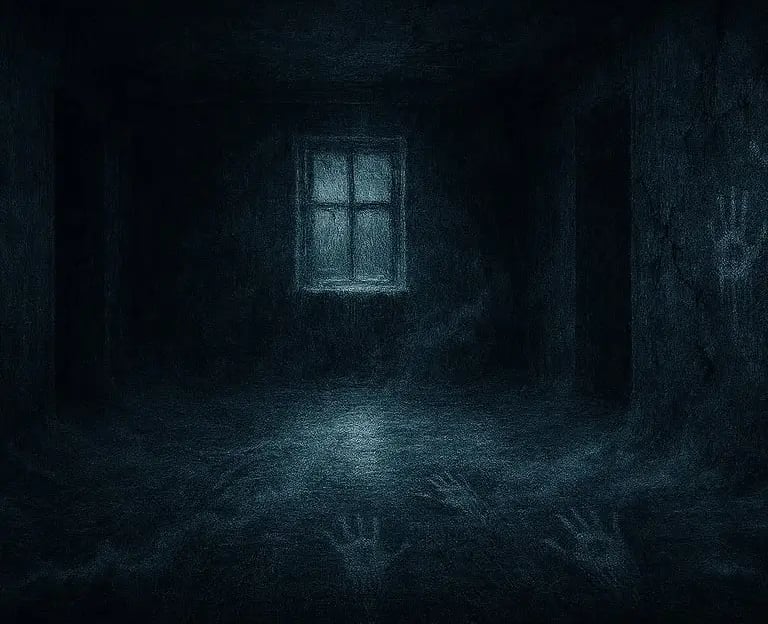

The Boy in the Ice was never meant to be remembered. His family tried to erase him with silence, with cruelty, with a freezer lid pressed shut. The neighbors tried to erase him with indifference, with the lie that it was “not their business.” The world tried to erase him by filing his story away as another tragedy, another statistic.
But silence does not erase. Silence preserves.
From the house of silence, his presence seeped outward. First into the prison cells, where frost bloomed on concrete and mirrors fogged with handprints. Then into the children’s homes, where siblings dreamed of him, where toys rearranged themselves, where lullabies hummed in the dark. Then into the town, where frost clung to abandoned windows, where neighbors whispered of a boy who would not leave.
And then into the world. Into forums and podcasts, into rituals and memes, into art and protest. The Boy in the Ice became more than a ghost. He became a mirror, reflecting guilt, fear, justice, and hope. He became an archetype, a figure who demanded remembrance, who punished cruelty, who protected the vulnerable.
His silence was never empty. It was full — of breath, of frost, of presence. It was the silence of a child who had been denied a voice, now speaking louder than screams.
The legend endures because it must. Every retelling is an act of witness. Every whisper of his name is a refusal to forget. Every frost‑bloomed window is a reminder that cruelty leaves echoes, that silence has weight, that the vulnerable are never truly voiceless.
The Boy in the Ice is not bound to one house, one freezer, one family. He belongs to all who have ever been silenced, all who have ever been ignored, all who have ever been left in the cold. He is their haunting, their guardian, their myth.
And so the story ends as it began: with silence. But now it is not the silence of neglect. It is the silence of presence, of frost spreading across glass, of breath fogging the air. It is the silence that speaks, the silence that remembers, the silence that will never let the world forget.
The Boy in the Ice remains. And he always will.
Share:
Based on a True Story
The Boy in the Ice is not only legend. He was a child — silenced, hidden, and left in the cold by those who should have protected him. In October 2025, deputies in Lynwood, California discovered the body of a 7‑year‑old boy sealed inside a freezer. His mother, father, and grandmother were arrested and charged with murder, torture, and conspiracy.
This work transforms that tragedy into myth — not to exploit, but to remember. To ensure silence does not erase the vulnerable again. To give voice, through story, to a child who was denied one in life.
The Boy in the Ice is both real horror story and archetype: a haunting born from cruelty, a silence that speaks louder than screams.
Resources & Further Reading
For those who wish to confront the truth behind the myth, here are reports from reputable outlets:
KTLA: ‘How did we not know?’ Neighbors shaken after child found dead in Lynwood freezer
Yahoo News: 7‑year‑old child found dead in freezer at Lynwood apartment; mother arrested for murder
CNY Central: 7‑year‑old boy found dead in freezer, with 3 family members facing murder charges
CBS News: Parents, grandmother of 7‑year‑old found dead in Lynwood freezer charged with murder
People: 7‑Year‑Old Boy’s Body Was Discovered in Freezer — Now Parents and Grandmother Face Charges
Frequently Asked Questions
Is The Boy in the Ice a true story?
Yes. This myth is based on the real case of a 7‑year‑old boy found dead in a freezer in Lynwood, California in October 2025. His mother, father, and grandmother were arrested and charged with murder, torture, and conspiracy. The mythic retelling transforms that tragedy into a symbolic haunting — not to exploit, but to remember.
Why tell this story as myth and horror?
Because horror is ritual. It allows us to confront cruelty in symbolic form, to give voice to the silenced, and to transform pain into something unforgettable. The Boy in the Ice becomes more than a victim — he becomes an archetype, a silence that speaks.
Is this meant to glorify the crime?
No. The purpose is the opposite: to honor the child by refusing to let silence erase him. The myth is protective, not exploitative. It transforms real horror into a story that demands remembrance and justice.
What parts are fact, and what parts are fiction?
Fact: A child was found in a freezer. Family members were charged. The case was widely reported.
Fiction/Myth: The hauntings, frost, whispers, and rituals are symbolic retellings — a way of giving the boy presence and power in story.
Why include resources and news links?
Because the myth is rooted in truth. Readers deserve to see the real reporting, to understand the weight of the case, and to honor the child beyond the legend.
How should readers approach this story?
As both horror and memorial. As a myth that chills, but also as a reminder: silence has consequences, cruelty leaves echoes, and the vulnerable must never be forgotten.
Keep the Flame Lit
The ritual doesn’t end when the candle gutters out. Protection, inspiration, and new workings continue in the quiet ember glow. Subscribe and I’ll send you fresh rites, occult insights, and updates from Horror & Hexes — sparks to keep your own fire alive.
About the Author:
Marcel Helmar is a cinematic occult artist, writer, and founder of Horror & Hexes. His work blends ritual symbolism, folk horror, and studio‑grade printmaking to produce limited art drops, immersive essays, and practical ritual guides.
Marcel’s writing and visual practice have been used by filmmakers, podcasters, and indie publishers to create atmosphere and authenticity; he teaches workshops on image making, lore research, and publishing for dark‑culture creators. Visitors can browse his gallery, read deep‑dive essays, or join the mailing list for exclusive drops and process notes.
Connect
Explore dark tales and ritualistic mysteries here.
Support
+1-337-718-0155
© 2025. All rights reserved.
Flesh Catechism T-Shirt
Eat Your Heart Out
$22.50

